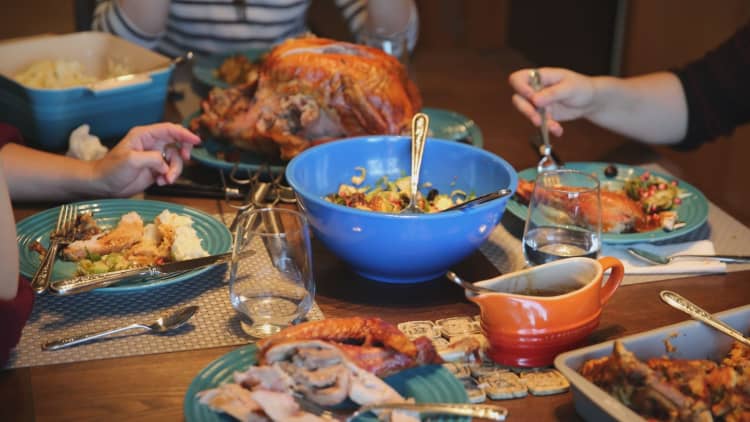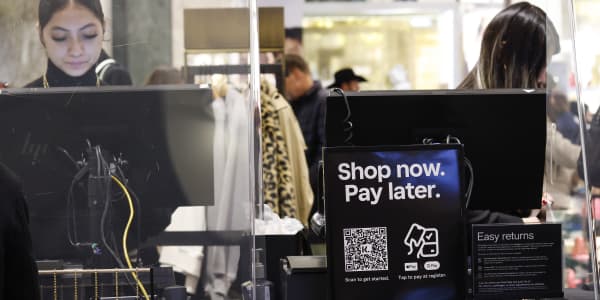If you've tried a meal kit delivery service, it turns out you're in the minority.
While restaurants and grocery stores have blamed these services for slowing same-store-sales growth in recent quarters, it seems only about 3 percent of U.S. consumers, or about 8 million adults, have tried meal kit services, according to NPD Group.
And half of those who tried it have already canceled their subscriptions.
"One percent of overall food spend now goes to meal kits," Aaron Allen, a global restaurant consultant, told CNBC.
Still, the meal kit industry has exploded since 2012 — quickly becoming saturated with more than 150 companies competing nationally, regionally and locally, all fighting for their share of the $1.5 billion market.
"Meal kits have become more popular over recent years, but their rise has been far from meteoric and they remain a relatively niche part of the food sector," Conlumino retail analytics CEO Neil Saunders told CNBC.
Consumers who flock to these services seek fresh ingredients, convenience and unique recipes. But keeping them engaged is a challenge.
Darren Seifer, a food and beverage industry analyst for NPD, noted that the number one reason consumers give for halting their subscriptions is because they say the kits are too expensive.
The majority of meal kits cost $60 to $75 a week for three meals for two people or $130 to $150 a week for four meals for four people. And while the kits are priced competitively with one another, they compare with an average cost of $4 a meal when cooking at home and $10 a meal when ordering at a restaurant, NPD said.
"Services must convince consumers that the convenience is worth it," Seifer told CNBC.
Aside from the expense, consumers cited small portions, too much packaging and inconvenient delivery schedules as reasons that they abandoned the subscription, Seifer said.
"To a certain extent you can tailor the meals to your tastes, but they do not allow for the 'I fancy this tonight' type flexibility that consumers like and can enjoy with regular grocery shopping," Saunders said.
However, there could be a more benign reason, according to Erik Thoresen, principal at Technomic.
"It's not necessarily that they won't come back," he said. "They may be trying another service."
The meal kit market is so saturated that consumers are testing several different options to see which service fits their lifestyle best, Thoresen told CNBC.
The good news is there is room to grow; some 20 percent of U.S. consumers, about 50 million people, have a strong interest in trying meal delivery kits, according to NPD research. In addition, of those who have tried the kits, 67 percent were either "extremely" or "very satisfied with their purchase," NPD said.
"Right now they all seem to be jockeying each other for market share," Seifer said.
Services like Blue Apron and Martha & Marley Spoon hope to stand out and earn consumer loyalty by offering special ingredients that can only be purchased through the subscription or by creating boxes for special occasions like Thanksgiving.
Blue Apron purchased the entire commercial supply of at least 40 specialty crops including fairy-tale eggplants, Shokichi Shiro squash and Atlas carrots. Consumers may have trouble replicating recipes with these ingredients, but they are getting exclusive access to rare and exotic produce.
But it's a challenging business and, according to Packaged Facts, the industry isn't actually profitable yet.
"Given the perishable nature of the products, this type of operation is complex and costly to run — especially so when you factor in the free delivery often offered," Conlumino's Saunders said. "This is one of the reasons why the services are not very profitable. However, the providers are limited as to how far they can increase prices because consumers won't pay above a certain level per meal."
That headwind hasn't discouraged investment. More than $650 million in venture capital has been raised by meal kit delivery service startups, according to Packaged Facts.

Meanwhile, Blue Apron talking with banks about the possibility of going public, Bloomberg reported in June.
"Although executives at Blue Apron, the largest meal kit marketer, claim to be making money on every meal, Packaged Facts believes that when sales are counterbalanced by the amount of funding raised by investors, no meal kit delivery service is yet profitable," Packaged Facts told the Eater food blog. "Moreover, the costs of expansion — including establishing new facilities, hiring more workers, and enticing new customers with deep discounts — could mean it will take a long time for most meal kit services to begin making money."
Still analysts do feel that meal kits represent a shift in how consumers source their food and their expectations for the food industry. In order for meal kit services to thrive, companies will need to address the convenience, price and flexibility of their subscriptions.
"Five years from now we will see a much clearer picture of who the bigger players are," Thoresen said. "I wouldn't put [meal kits] in the fad category."





